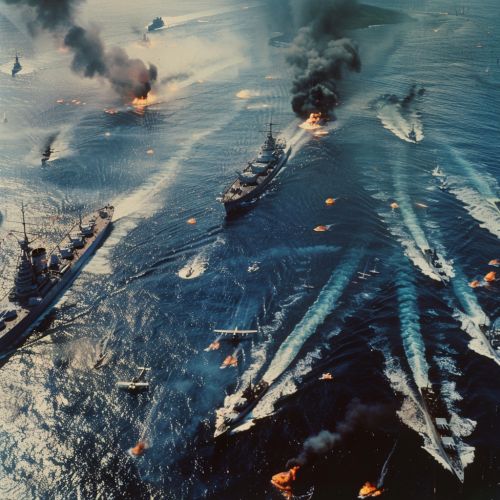Battle of Midway
Background
The Battle of Midway was a significant naval battle in the Pacific Theater of World War II that took place from June 4 to 7, 1942, six months after Japan's attack on Pearl Harbor and one month after the Battle of the Coral Sea. The United States Navy under Admirals Chester Nimitz, Frank Jack Fletcher, and Raymond A. Spruance defeated an attacking fleet of the Imperial Japanese Navy under Admirals Isoroku Yamamoto, Chuichi Nagumo, and Nobutake Kondo near Midway Atoll, inflicting devastating damage on the Japanese fleet.


Prelude to the Battle
The Japanese operation, like the earlier attack on Pearl Harbor, sought to eliminate the United States as a strategic power in the Pacific, thereby giving Japan a free hand in establishing its Greater East Asia Co-Prosperity Sphere. The Japanese hoped another demoralizing defeat would force the U.S. to capitulate in the Pacific War and thus ensure Japanese dominance in the Pacific.
Battle
The plan was handicapped from the start due to faulty Japanese assumptions of the American reaction and poor initial dispositions. Most significantly, American cryptographers were able to determine the date and location of the planned attack, enabling the forewarned U.S. Navy to prepare its own ambush.
Aftermath
The Battle of Midway, along with the Guadalcanal Campaign, is widely considered a turning point in the Pacific War. Because of this, it is often referred to as "the turning point of the Pacific". The Battle of Midway has often been called "the most stunning and decisive blow in the history of naval warfare" by historians.
Legacy
The Battle of Midway has been the subject of many books, films, and games. The battle is often used in studies of carrier warfare and has become a key part of the curriculum in naval academies.
